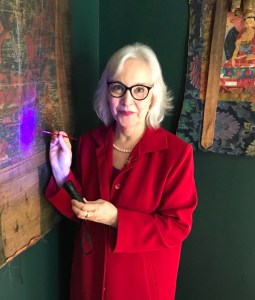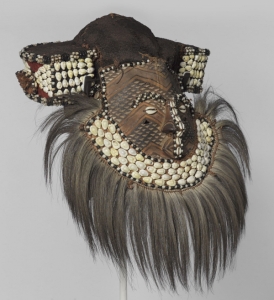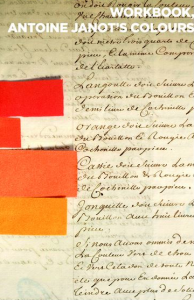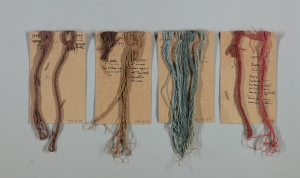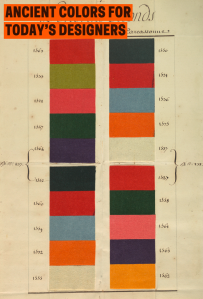
A new exhibition entitled Baghs – Abstract Gardens opened at the Brunei Gallery, SOAS, London today Tuesday 13 July 2021. This exhibition showcases excellent examples of baghs and phulkaris from the Karun Thakar collection. These were domestic embroidered shawls from pre-partition Punjab, which were mainly done by Sikh, Hindu and Muslim women. There was also an export market for them in the nineteenth century. Bookings for this free exhibition, which runs until 25 September 2021, are available through this link.
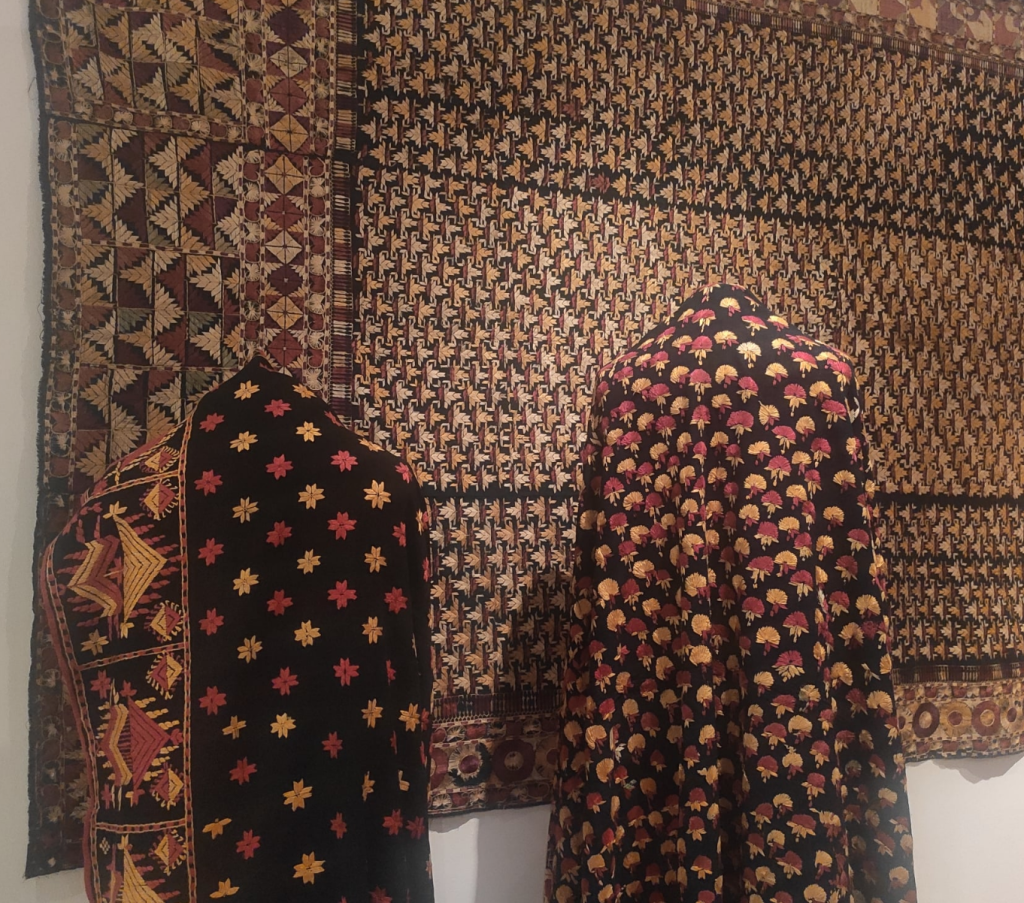
OATG members in the UK should now be receiving their hard copy of our journal Asian Textiles. It takes a little longer to reach our overseas members, but for those who can’t wait a pdf will soon be available on our website in the password-protected area.
This is a particularly eclectic edition, with articles on Alfred Steinmann and the Ship Motif (Gaspard de Marval and Georges Breguet), Multaka-Oxford and the Jenny Balfour Paul pieces at the Pitt Rivers (Thandiwe Wilson), Textiles from the Yemen (Angela Thompson), Finnish ryijy rugs (Igor Honkanen and Gavin Strachan) and much more. We are now using a different printing company and I think the illustrations really shine through.

Another publication that you may find of interest is The Journal of Dress History, produced by The Association of Dress Historians. This Association “supports and promotes the study and professional practice of the history of dress, textiles, and accessories of all cultures and regions of the world, from before classical antiquity to the present day.” Each edition of the journal contains lengthy scholarly articles, along with numerous book and exhibition reviews. They can be accessed completely free of charge here. My only criticism would be that it would be good to have an index of the articles too. EDIT – I have since been informed that three separates indices are in fact available – one covers the articles, one the book reviews and one the exhibition reviews. lick the relevant link in the blue box on the right on this page. Apologies for not spotting this earlier!

Kimono, Early Showa period, circa 1926–1945, © The Private Collection of Keiko
Okamoto, Tokyo, Japan
On Saturday 17 July 2021 the George Washington Textile Museum will be hosting one of its regular Rug and Textile Appreciation sessions. In Silk Stories docent Pamela Kaplan will introduce her project looking at the history of silk production in India and around the world. “The project documents the changing lives of silk farmers and textile producers through photographs, videos, interviews and more.” – Textile Museum website. This virtual event takes place at 11:00 EDT, which is 16:00 BST. It is free, but registration is required.
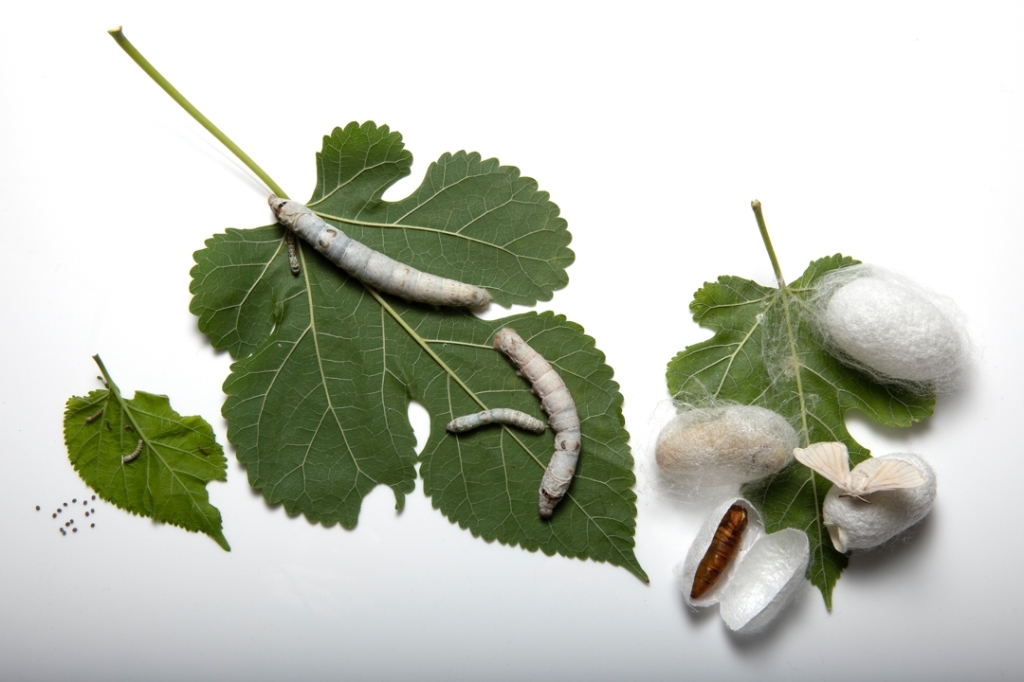
Don’t forget the next OATG event is our talk by Walter Bruno Brix of the German Textile Museum at 18:30 BST on Thursday 22 July 2021. Walter will be talking to us about the museum’s current exhibition Dragons Woven With Golden Threads. This exhibition of around 120 pieces has been curated by Walter Bruno Brix, and contains textiles from the Yuan Dynasty (1279–1368) to the People’s Republic of China (1949). “Special objects include fragments of an imperial robe from the eighteenth century, a robe with dragon medallions for a noble lady in slit tapestry, two oversized robes for statues of gods, an imperial shroud, a large fragment of a palace carpet made of silk velvet”- museum website. This Zoom talk is also open to non-members for a small (£3) donation. Please click here to register, but hurry as there are not many spaces remaining!

A new exhibition will open on 23 July 2021 at The Russian Museum of Ethnography in St Petersburg. The exhibition is entitled In Harmony with Red: Turkmens and will run until 23 January 2022. It examines the dominance of the colour red in their textiles, carpets, horse and camel decorations, how it was used in ritual items and as part of decorative designs. Click here for more details and several more examples of the exhibits.
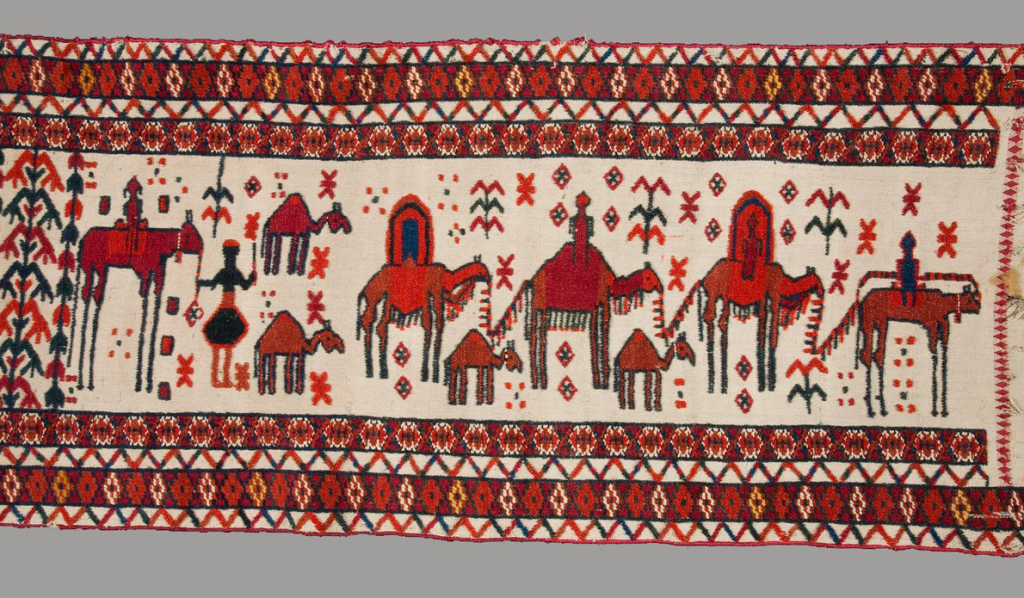
On Thursday 29 July 2021 the Textile Museum have another film discussion in their regular Fashion on Film series. This time the film in question is Threads – an award-winning documentary by Cathy Stevulak looking at the late Surayia Rahman and her role in transforming traditional kantha embroidery from “patchworks of old clothing to articles of fashion”. When you sign up for this event you will receive a link to watch the 32 minute documentary at your leisure, as well as instructions for joining the program for a group discussion. As the discussion is at 18:00 EDT (23:00 BST) it may be too late for our UK members, but that doesn’t preclude you from watching the documentary.
If you would like to learn more about the story behind this documentary I suggest you visit the ClothRoads website where they have an interesting blog on how it was made, beginning with the maker hearing about “a woman with grey hair who does remarkable embroidery work”.
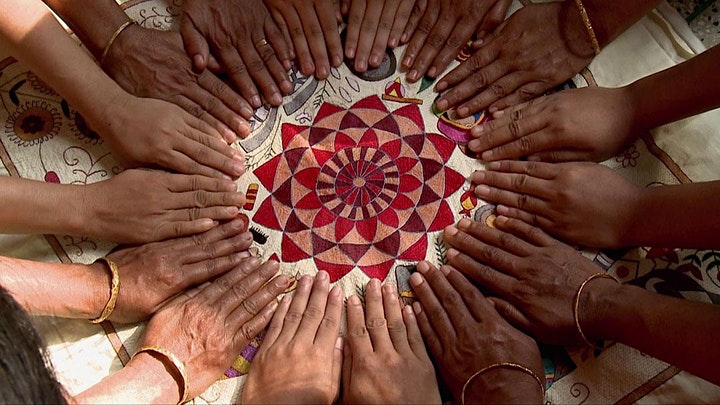
If you are aware of interesting textile-related talks and exhibitions that could be added to this blog please do let me know! I can be contacted here.

